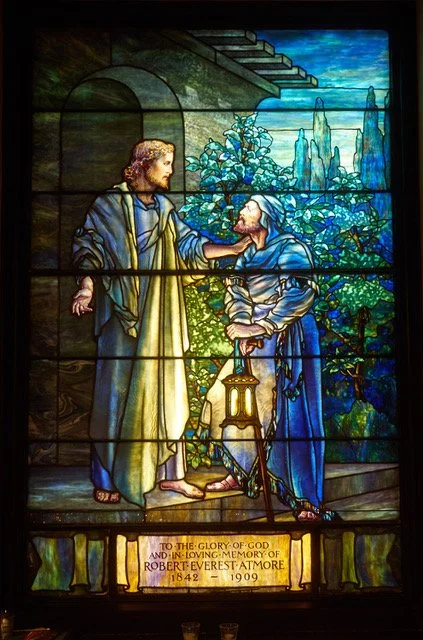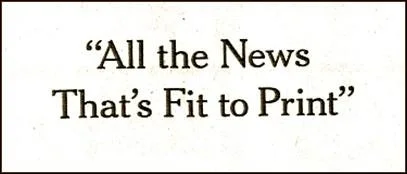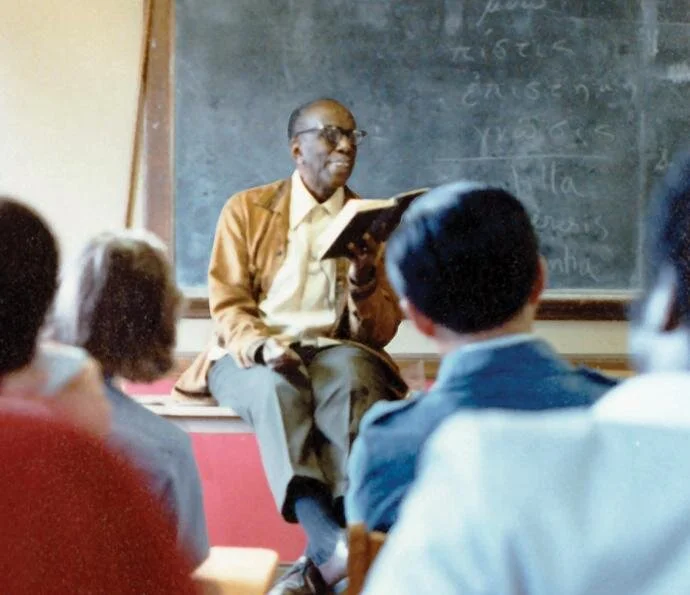Friday Lenten Reflection for Good Friday: The Place of the Cross
"Good Friday: day of the cross, day of suffering, day of hope, day of abandonment, day of victory, day of mourning, day of joy, day of endings, day of beginnings."
— Henri J.M. Nouwen, Show Me the Way, p. 169
I. Following and praying The Stations of the Cross, 14 artistic renderings memorializing key moments in the passion and death of Jesus, has been a Christian ritual since the early 13th century. It was then that the Franciscans and their founder, Francis of Assisi, gave life to the Stations as a congregational meditation. By the 19th-century, the Stations of the Cross had become an important personal devotion of Christians, as Roman Catholics, Lutherans, Methodists, and Anglicans incorporated the Stations into their Good Friday liturgies.
II. Holy Week, which begins on Palm Sunday and ends on Holy Saturday, is meant to be a meditation on the story of the last days of Jesus as God and as man. Each day focuses on significant events, people, and politics and, depending on what scripture lessons are appointed for the liturgy of each day, we sometimes encounter different emphases. Taken together, however, the readings and liturgies of Holy Week are meant to offer a comprehensive picture, the full story, of the last week of Jesus’s life, before the Resurrection. Characters fade in and out of the narrative and, for the most part, major players in the drama—Peter, Judas, Pilate, Mary Magdalene, the women, Joseph of Arimathea, Nicodemus, Simon of Cyrene, Annas, the high priest Caiaphas, the chief priests, the elders, the scribes, the centurion, Mary, the mother of Jesus—serve as characters in the unfolding drama. The details of this full story are often rich and suggestive, illuminated by the appointed scripture readings.
III. Yet, for all the protagonists and events we experience, Jesus is the compelling focus of the Stations of the Cross. In all the days of Holy Week, no liturgy or ritual, no observance, no set of texts, reveals the rawness of the suffering and pain of Jesus and the terrible and cruel path to his death as does Good Friday and the Stations of the Cross. There was no escape. It was a horrible and agonizing ordeal. We can acknowledge that the suffering of Jesus was holy, blessed by the Father, but this suffering is still one of indescribable cruelty and violence.
IV. The Stations you will see on the video chosen to be part of this Good Friday Reflection, offer a complete picture of Jesus’ passion and death with all its details and all of its power. The 30-minute video was produced by the Roman Catholic Paulist Fathers for its “Busted Halo” website. It is our belief that the “Busted Halo” Stations of the Cross are remarkably relevant and instructive for this time of the pandemic. These stations are very real, especially now, and can reflect the reality of the “Holy Cross” in our own lives. This is what Lent was meant to be about: that by his “Holy Cross, Jesus redeemed the world.” (from the Stations of the Cross liturgy)
—Father Peter Kountz
Consider, the day after the Church formally commemorates him, what this marginalized, gifted kid gave to a fractious community so eerily like our own.
Father Peter discusses Presence in this week’s edition of Words From Saint Stephen’s.
Suzanne, our historian, explores volatile facets of our interconnectedness through touch.
This week’s edition of Words From St. Stephen’s commemorates the feast of Candlemas and reflects on what News means today.
Rev. Mike commemorates the Zen Buddhist Monk Thich Nhat Hanh and discusses the word Interbeing in this week’s Words from St. Stephen’s.
Father Peter continues our new blog series, Words From St. Stephen’s, with a discussion on the word care.
Our historian Suzanne explores powerful dimensions of BREATH today and through time.
Father Peter and historian Suzanne Glover Lindsay introduce you to a new year and a new series of posts for the St. Stephen’s blog.
Father Peter continues his discussion of the life of Howard Thurman. Read Part 1 of this reflection HERE.























